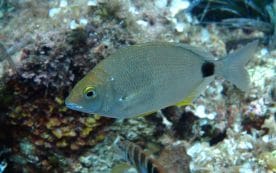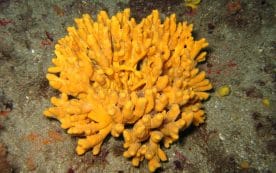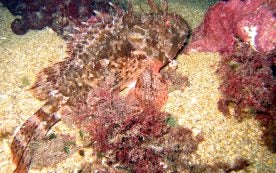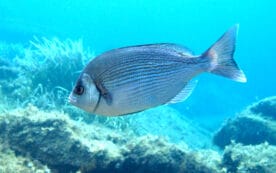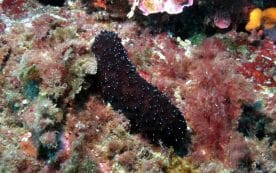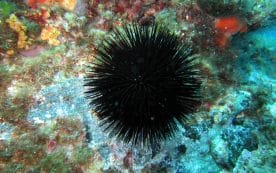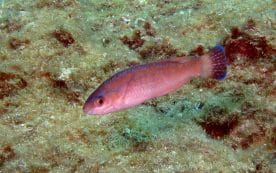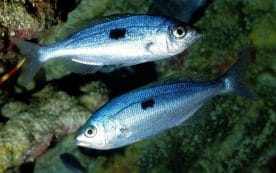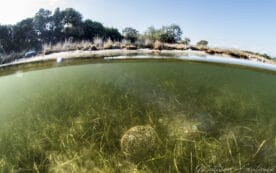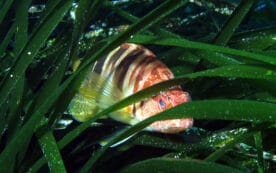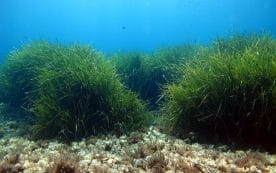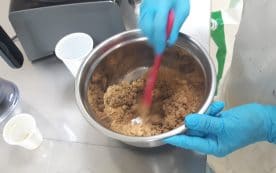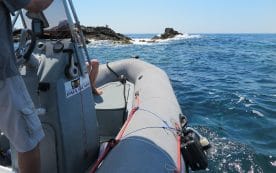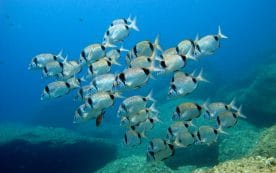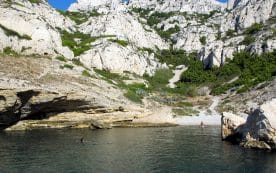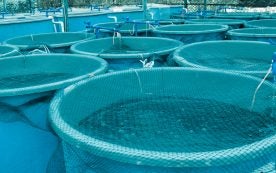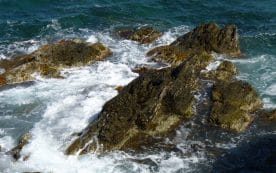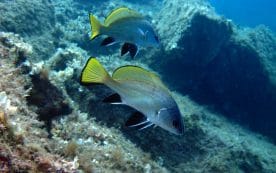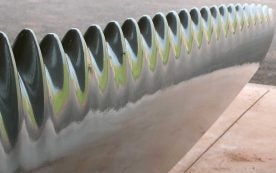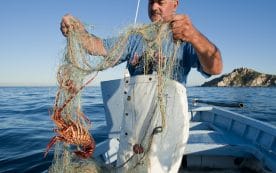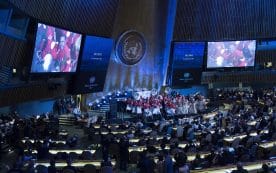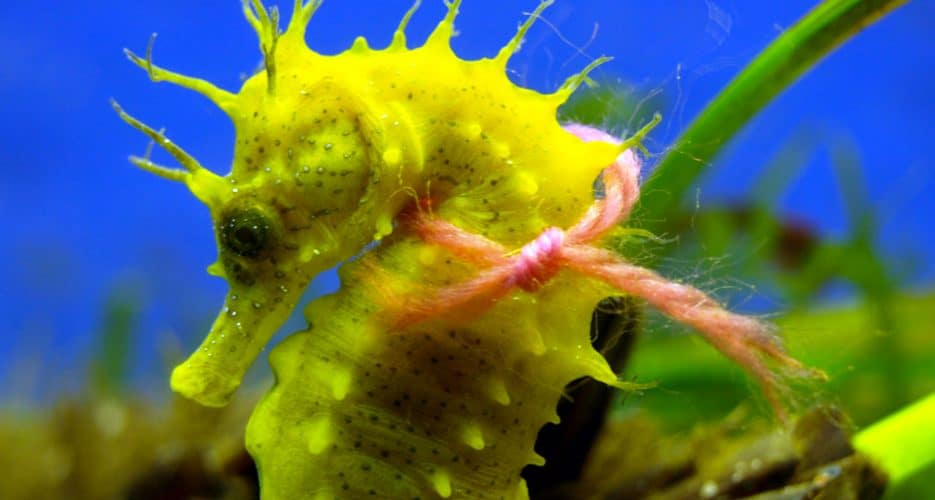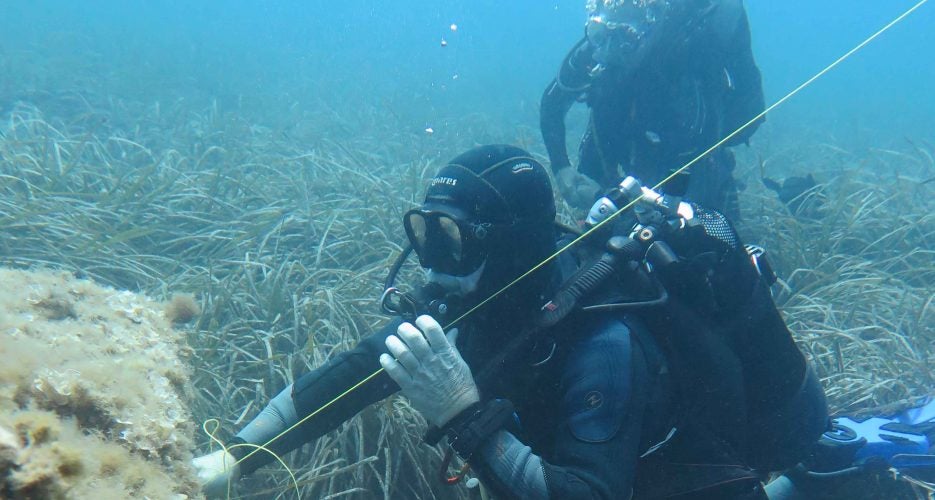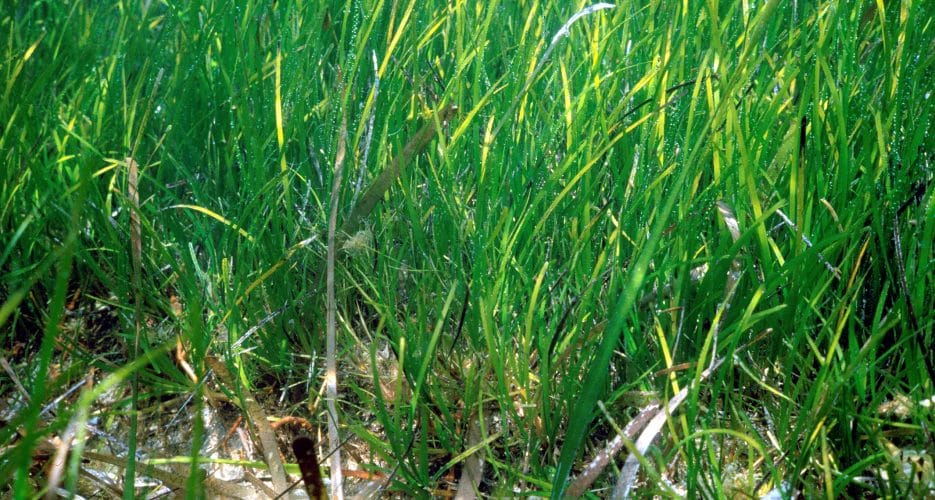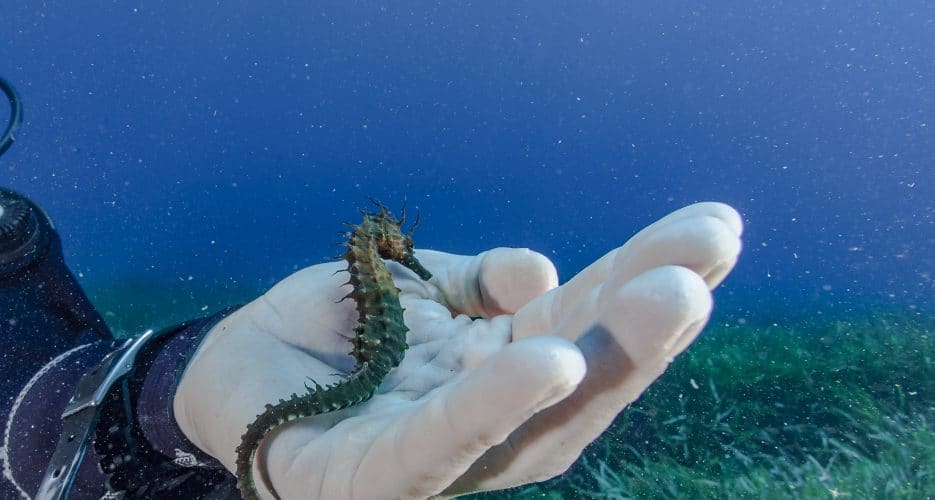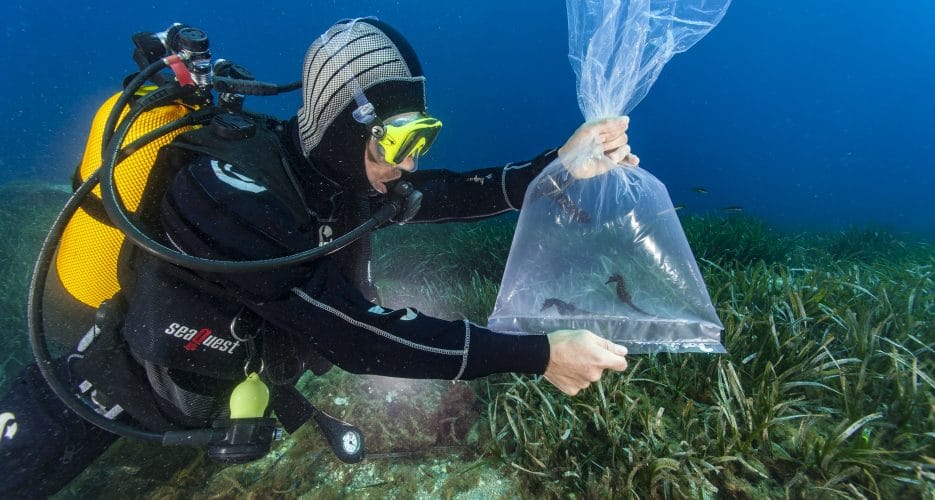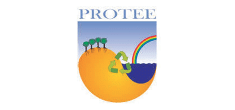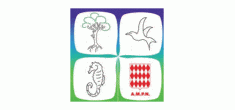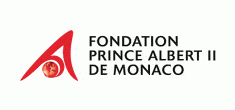Context
There are two species of seahorse in the Mediterranean, the short-snouted, Hippocampus hippocampus, and the speckled, Hippocampus guttulatus. They are found in Posidonia and Zostera seagrass and in seaweed between the surface and 50m deep, habitat that is becoming rarer due to coastal degradation and human activity. Despite the fact that they feature on the International Union for Conservation of Nature’s (IUCN) Red List of threatened species, neither of these truly unique fish are protected. Reintroducing them into protected areas could help slow the decline in seahorse populations.
Programme
The Institute has fully mastered the breeding of Mediterranean seahorse species, raising them in captivity until they reach their adult size. Some 1000 individuals have been distributed to public aquariums in France and abroad, a way of preventing more wild seahorses from being captured.
A previous experimental release in the Etang de Thau (south of France) was not successful, partly due to lack of monitoring.
This is the first complete programme to be rolled out, from establishing the genetic profile of the seahorses and their breeding stock to reintroducing them and monitoring the populations over multiple years. Releasing them into a fully protected marine reserve like the Larvotto creates a high chance of success, and could become a model for other protected areas.
Phase 1
Nine seahorses at the Institute were selected as breeding stock. Each one was tagged with a ring (blue for males and yellow for females) and given an identifier. Five of them, two males and three females, are from the Brusc lagoon (Var) and the four others, two males and two females, from Cavalaire (Var).
Researchers harvested a thin filament of skin from each individual, an operation that is as painless as when we cut our nails. The PROTÉE lab at Toulon University performed the genetic testing of the breeding stock (microsatellite genotyping of DNA sequences), providing us with their DNA “ID card”.
Phase 2
Once the juveniles born from different breeding couples reached an age where their sex could be determined, various precautions were taken before releasing them into the natural environment. For example, siblings should not be reintroduced together to reduce the risk of mating between related individual and prevent consanguinity, which also leads to less genetic diversity in wild populations. The genetic characterisation of all descendants was verified, and 36 mature seahorses were selected for release, representing 18 potential couples.
Phase 3
After obtaining the necessary permits, the seahorses from the breeding programme were released into the Larvotto marine reserve. AMPN (a nature conservation association in Monaco) will perform in situ monitoring of their survival rates, movement and reproductive capacity. The individuals that were released are all tagged, which will make identification easier.
Last updated on : 23 December 2019
Landy Soambola O.A., A. Riva, N. Vicente, 2006. Contribution à l’élevage des Syngnathes. In : Bassins et élevages aquatiques d’ornement. 21-22 mai 2006, Nice, France. Mém. Inst. océanogr. Paul Ricard, pp : 47-54.
López A., Vera M., Planas M., Bouza C., 2015 – Conservation genetics of threatened hippocampus guttulatus in vulnerable habitats in nw spain: temporal and spatial stability of wild populations with flexible polygamous mating system in captivity. doi: 10.1371/journal.pone.0117538.
Lopez A., M. Vera, F. Otero-Ferrer, B. G. Pardo, P. Martinez, L. Molina, C. Bouza, 2010 – Species identification and genetic structure of threatened seahorses in Gran Canaria Island (Spain) using mitochondrial and microsatellite markers. Short Communication. Conserv Genet. doi : 10.1007/s10592-010-0116-6
Mobley K.B., C.M. Small and A.G. Jones, 2011 – The genetics and genomics of Syngnathidae: Pipefishes, seahorses and seadragons. Journal of Fish Biology, 78(6):1624-46. doi: 10.1111/j.1095-8649.2011.02967.x.
Otero-Ferrer F., 2011. Seahorses in Gran Canaria Island (Spain): Ecology and Aquaculture-Combined Tools for Marine Conservation Issues. PhD Thesis, Universidad de La Palmas de Gran Canaria. 279 p.
Otero-Ferrer F., R. Herrera, A. López, J. Socorro, L. Molina and C. Bouza, 2015 – First records of Hippocampus algiricus in the Canary Islands (north-east Atlantic Ocean) with an observation of hybridization with Hippocampus hippocampus. Brief Communication. The Fisheries Society of the British Isles, Journal of Fish Biology, pp 1-10. doi: 10.1111/jfb.12760.
Planas, A. Vilar, A. López, A. Chamorro and C. Bouza, 2007 – Técnicas de identificación individual de caballitos de mar (hippocampus guttulatus) para una correcta gestión de reproductores en cautividad: uso de collares y muestras no invasivas para análisis genético. Conference: XI Congreso Nacional de Acuicultura (Vigo, Spain).

